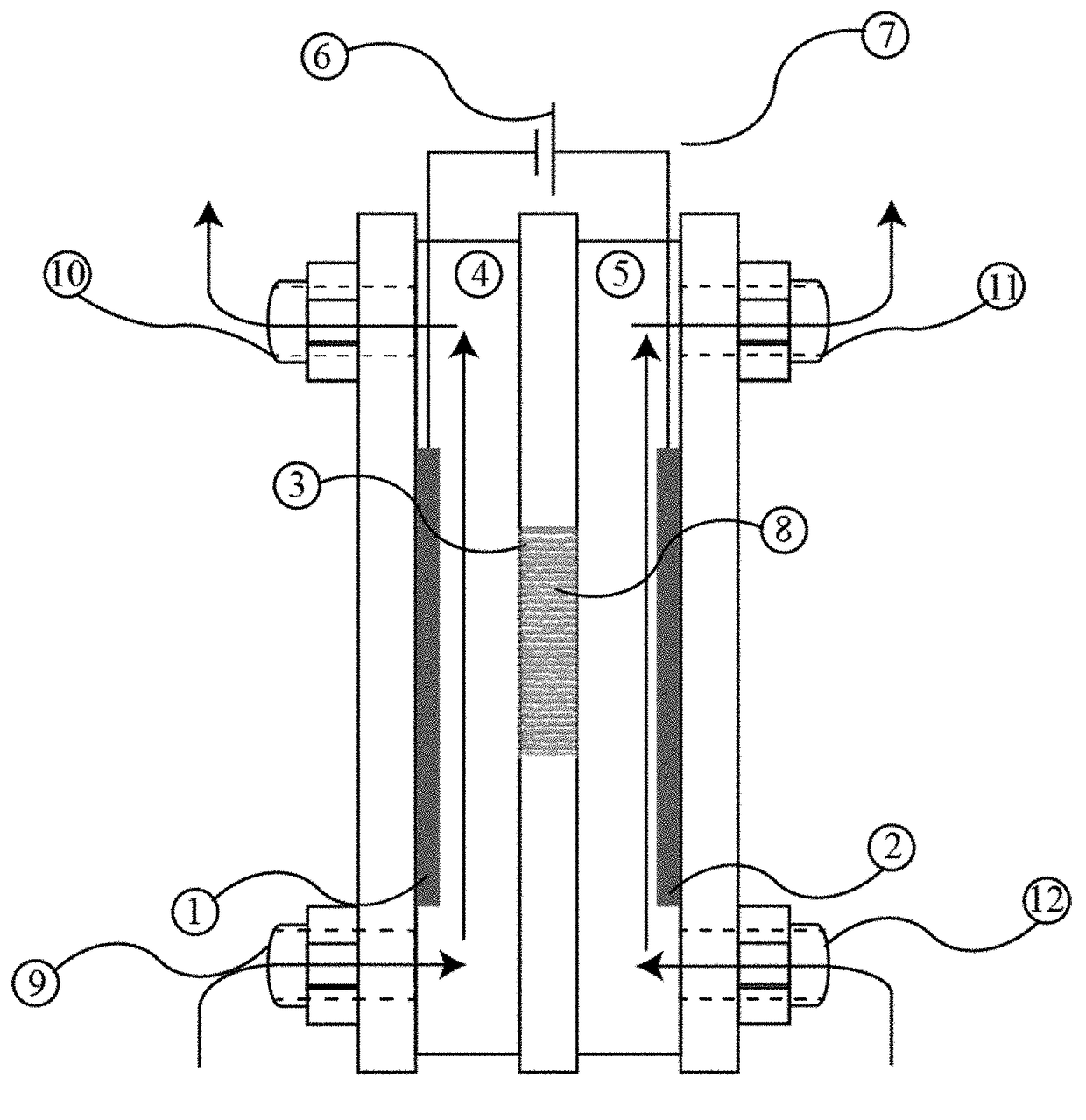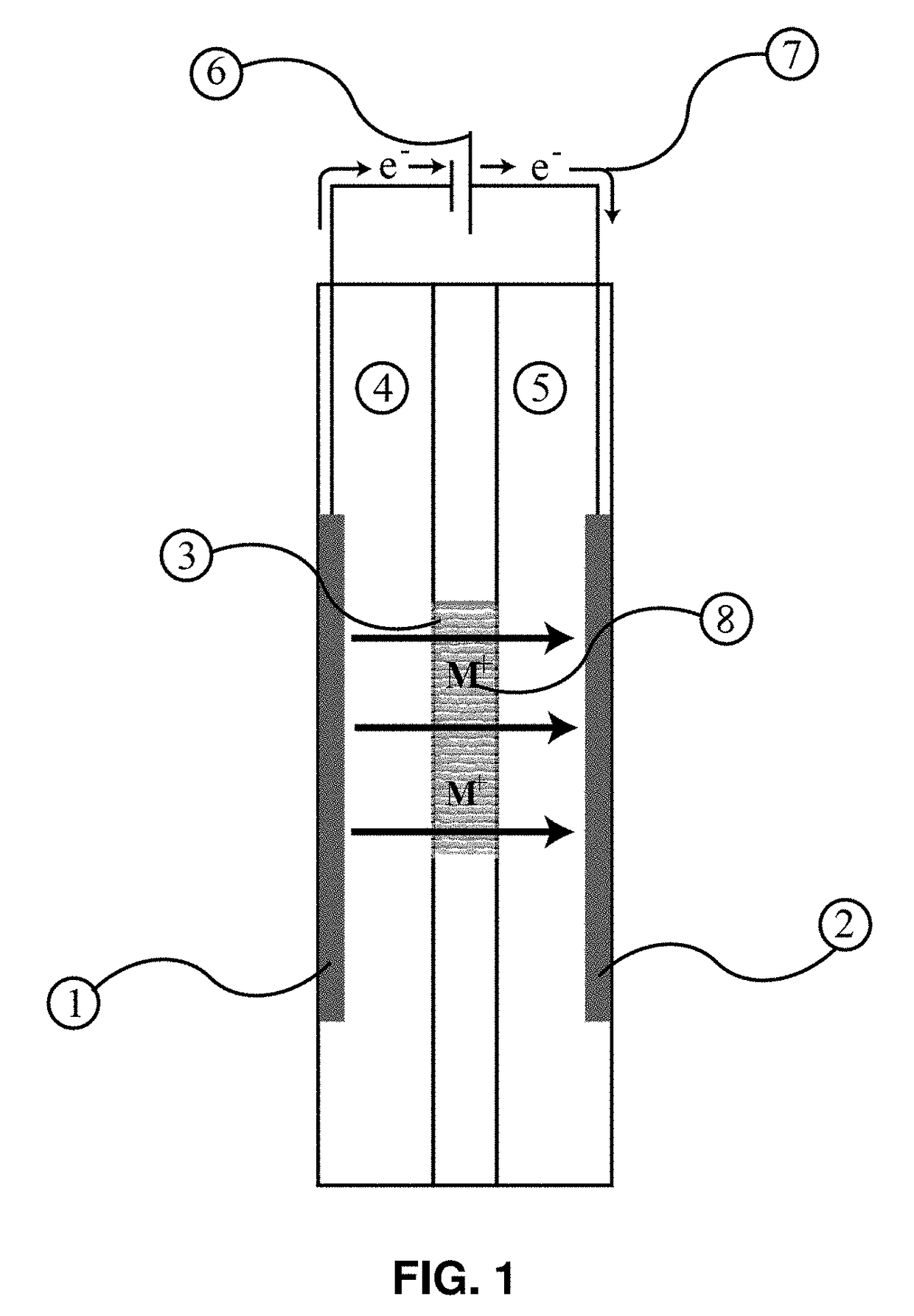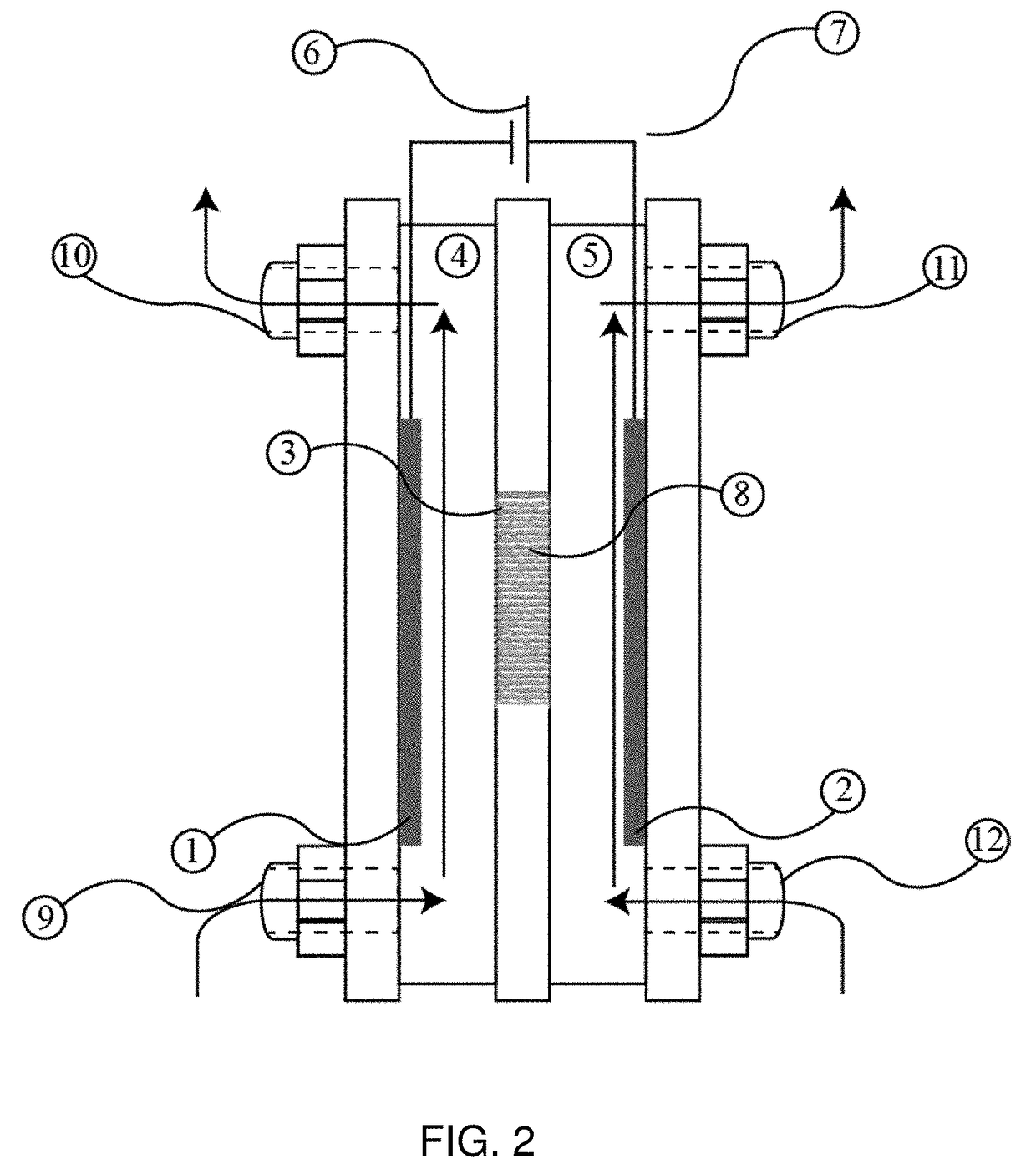Intercalation membrane
a technology of intercalation membrane and membrane, which is applied in the direction of membranes, electrolyte stream management, electrochemical generators, etc., can solve the problems of reducing the benefit of using a membrane, reducing the number of ions, and reducing so as to improve the efficiency of electrochemical transfer walls and increase the number of ions. , the effect of expanding the number of electrochemical systems
- Summary
- Abstract
- Description
- Claims
- Application Information
AI Technical Summary
Benefits of technology
Problems solved by technology
Method used
Image
Examples
example 1
[0067]An intercalation membrane was used to transfer ions from a first medium to a second medium. Na-ions were transferred from an aqueous solution of sodium sulfate in contact with the anode through an intercalation membrane and to an aqueous solution also containing sodium sulfate. The electrolytes were both made to contain 10 wt % Na2SO4 making an aqueous solution with a pH between 9 and 10. The temperature of the electrolytes was unchanged, remaining at room temperature for the duration of the experiments. Two different experiments were conducted with the system. The first consisted of a current density step experiment, where the current density was stepped up starting at 0.5 mA / cm2 to 250 mA / cm2 holding each step for 60 s. The second experiment was a bulk electrolysis experiment, in which the current density was maintained at 110 mA / cm2 for the duration of the experiment. The current 13, 15 and potential 14, 16 transients of these experiments can be seen in FIGS. 3 and 4. It ca...
example 2
[0068]An intercalation membrane was used to transfer ions from a first medium to a second medium. Li-ions were transferred from an aqueous solution of lithium sulfate in contact with the anode through an intercalation membrane and to an aqueous solution also containing lithium sulfate. The electrolytes were both made to contain 10 wt % Li2SO4 making an aqueous solution with a pH between 9 and 10. The temperature of the electrolytes was unchanged, remaining at room temperature for the duration of the experiments. Two different experiments were conducted with the system. The first consisted of a current density step experiment, where the current density was stepped up starting at 0.5 mA / cm2 to 250 mA / cm2 holding each step for 60 s. The second experiment was a bulk electrolysis experiment, in which the current density was maintained at 110 mA / cm2 for the duration of the experiment. The current 17, 19 and potential 18, 20 transients of these experiments can be seen in FIGS. 5 and 6. It ...
example 3
[0069]An intercalation membrane was used to transfer ions from a first medium to a second medium. Mg-ions were transferred from an aqueous solution of magnesium sulfate in contact with the anode through an intercalation membrane and to an aqueous solution also containing magnesium sulfate. The electrolytes were both made to contain 10 wt % MgSO4 making an aqueous solution with a pH between 9 and 10. The temperature of the electrolytes was unchanged, remaining at room temperature for the duration of the experiments. Two different experiments were conducted with the system. The first consisted of a current density step experiment, where the current density was stepped up starting at 0.5 mA / cm2 to 250 mA / cm2 holding each step for 60 s. The second experiment was a bulk electrolysis experiment, in which the current density was maintained at 110 mA / cm2 for the duration of the experiment. The current 21, 23 and potential 22, 24 transients of these experiments can be seen in FIGS. 7 and 8. ...
PUM
 Login to View More
Login to View More Abstract
Description
Claims
Application Information
 Login to View More
Login to View More - R&D
- Intellectual Property
- Life Sciences
- Materials
- Tech Scout
- Unparalleled Data Quality
- Higher Quality Content
- 60% Fewer Hallucinations
Browse by: Latest US Patents, China's latest patents, Technical Efficacy Thesaurus, Application Domain, Technology Topic, Popular Technical Reports.
© 2025 PatSnap. All rights reserved.Legal|Privacy policy|Modern Slavery Act Transparency Statement|Sitemap|About US| Contact US: help@patsnap.com



